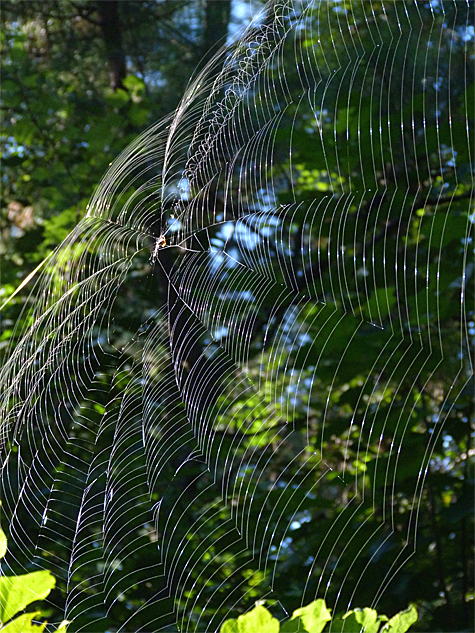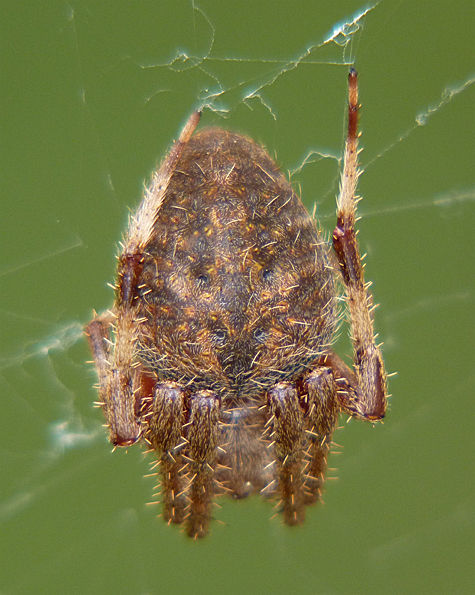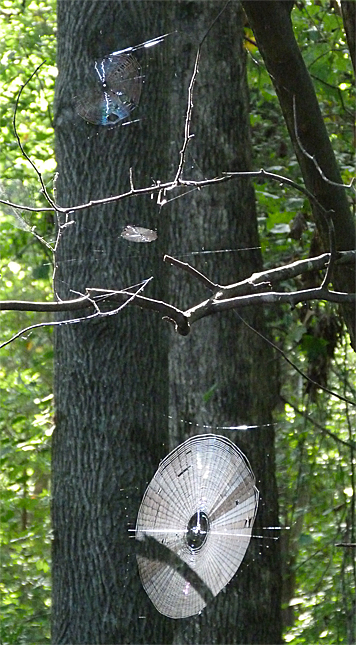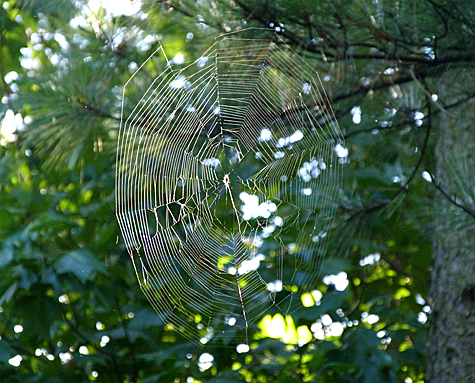If you’re the first one on the paths or trails in the morning during the next month or so, whether here at the Museum or on your favorite hiking trail, you’re likely to come face to face (literally) with a spider web. A face full of spider web is an uncomfortable feeling for most folks. Even if you like spiders (it seems many people don’t), most people react by immediately tearing away at the web, get OFF of me!

And, the thought of the spider being attached to the web…yech! There’s a visceral reaction to a creature that’s typically hairy, has eight legs, and can move like quicksilver. The sticky silk of the web feels foreign to us and the thought of a spider crawling up one’s sleeve or down the nape of your neck and then down the collar, even though most orb weavers would try desperately to get away rather than crawl anywhere on or near you, is just too much for some people to bear.

So, what’s up with all the webs seemingly everywhere you look at this time of year. Well, the spiders have been here all along, you just haven’t noticed them. Yes indeed, they’ve been building their webs too, although in places where you may not have seen them.

All spiders, as most living things (except maybe whales and elephants), start off as tiny little things. Immature spiders look like miniature versions of their grown up selves. Small spiders build small webs and they usually build them down lower in the vegetation. They may molt 5 – 10 times before reaching adult size, the size you see in the fall when they build their webs where you like to walk. By this time, the webs can stretch across a country road.
How do they build webs across a road, or even a woodland hiking trail? Most web building is done at night. While standing on a tree branch, shrub, or post, the spider lets out a strand of silk, feeding out more silk as it’s caught up and carried away by the wind. Eventually the silk comes in contact with a twig, a branch, or the side of your house. The spider then reels in the slack and securely attaches her end to the object she was standing on. She walks the tightrope to the other side and makes sure it’s secure. She now has two anchor points. She can let herself down anywhere along that line of silk to secure a new line wherever she finds it necessary, another anchor point. She can secure it further or begin building the beautiful, circular web that we may accidentally walk into the following morning.
Spiders put a lot of work into their webs, and they are damaged in many ways, not the least of which is a human walking into them. Leaves, twigs and branches fall out of the trees, wind pushing and pulling at the anchor points (trees blowing in the wind), and heavy rain can all destroy a night’s work in no time at all. Even a large insect like a cicada, or a bird flying through the web can tear it apart. I’ve seen cicadas trapped in webs. The damage is severe, but weighing the meal the spider receives against the damaged web and it’s probably worth the effort required to rebuild the web.

Spiders can, and do, repair miscellaneous damage to their web throughout the day, but if the web is destroyed it’ll most likely have to wait till the night before it’s completely redone.
So, how do you avoid getting a face full of spider web while walking in the fall woods. Sometimes you can actually see the web before smacking into it. But just in case, you can hike later in the day when others have already busted through the webs.
If you insist on going out early, you can carry a walking stick with you and wave it up and down in front of you as you walk. If this seems awkward, go with a friend, preferably one that’s taller than you. If the path is a narrow one, let them walk in front of you. If the path is wide enough for two to traverse, side by side, walk just a little slower than your companion, maybe one, two steps, behind them should do the trick.